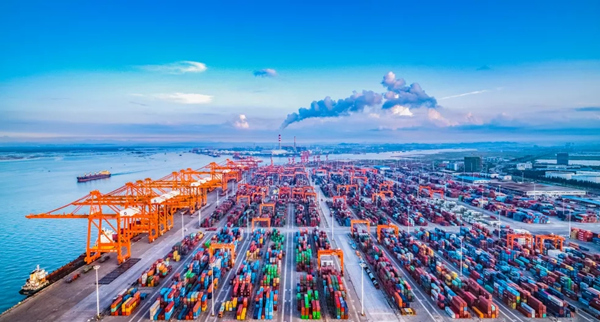
Guangxi FTZ paves way for high-quality development

The Qinzhou area of the Guangxi FTZ. [Photo/WeChat account: gh_df8bc987e060]
The Nanning, Qinzhou and Chongzuo areas in the China (Guangxi) Pilot Free Trade Zone (FTZ) have achieved high-quality development since the zone's establishment in August, 2019 by the State Council.
The Nanning area utilizes the advantages of the State-level open cooperation platforms such as the financial open gateway to ASEAN, the New International Land-Sea Trade Corridor, and the China-ASEAN Information Harbor, and focuses on the development of modern service industries such as smart logistics, the digital economy, cultural media, and emerging manufacturing industries.
It had made 76 systematic innovations with one receiving praise from the General Office of the State Council and 17 have been promoted in Guangxi Zhuang autonomous region.
More than 10,000 enterprises have settled in China-ASEAN Financial City, including more than 200 financial institutions. The area is now home to over 3,000 digital economy companies, and 700 logistics companies.
The Qinzhou area has built the country's only railway container central station in a non-provincial capital city, and is the first to utilize remote automatic loading and unloading operations in China. The container loading and unloading capacity has increased by seven times, and the annual handling volume is ranked fifth in the country.
It has built the country's first automated container port for combined ocean and rail transport. The port throughput and container throughput of Qinzhou Port are listed in the top 20 and is considered as one of the top 15 coastal ports in China, ranking 47 among the top 100 container ports in the world.
A total of 92.9 percent of the reform pilot tasks in Chonzuo area were completed, and 14 innovation cases were launched, of which eight were listed in the first batch of systematic innovation achievements in Guangxi.
The port has been taking an active role in helping connect major national economic areas such as the Yangtze River Economic Belt, the Guangdong-Hong Kong-Macao Greater Bay Area, and the land-sea corridor.




